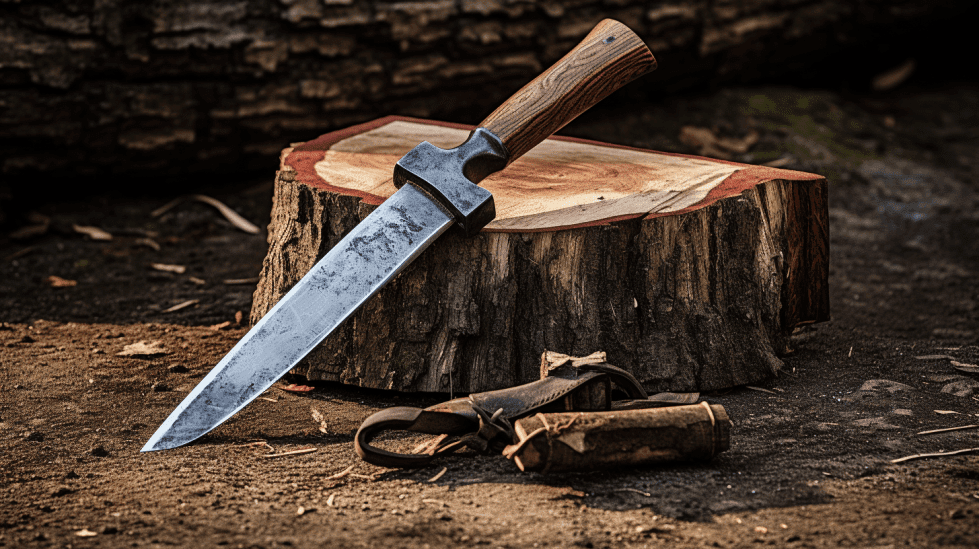Bushcraft Gear List
Bushcraft is the art of utilizing nature and our resources to create a sustainable living environment. Equipping ourselves with the right gear can make the difference between a successful wilderness adventure and a potentially life-threatening situation. The key to mastering bushcraft comes with a well-rounded gear list that accounts for various survival situations and supports a comfortable, efficient outdoor experience.
When we venture into the great outdoors, it’s essential to be prepared for unexpected weather changes, possible injuries, and other unforeseen challenges. By assembling a reliable bushcraft gear list, we not only increase our chances of survival but also develop a deeper understanding of the natural world around us. A properly curated gear list should include essential items like shelter, fire-starting tools, clothing, navigation tools, and water purification systems, as well as items for convenience and comfort.
Key Takeaways
- A well-curated bushcraft gear list can significantly improve the chances of success and enjoyment in the wilderness.
- Essentials include shelter, fire-starting tools, clothing, navigation tools, and water purification systems.
- Incorporating both convenience and comfort in our gear list can help us develop a deeper appreciation and understanding of nature.
Bushcraft Essentials
Essential Items
In my experience with bushcraft, I found that having a well-prepared kit is crucial for successful outings. Essential items for any bushcraft gear list typically include a cutting tool (knife, axe, or saw), fire starter, shelter (tarp, tent, or hammock), cooking equipment (pot, stove), water purification system, navigation tools (compass, map), cordage (paracord or rope), first aid kit, appropriate clothing, and a backpack for storage1. These items will ensure that I have everything I need to survive in the wilderness.
Bushcraft Skills
Besides having the right gear, I also need to possess essential bushcraft skills. Some of these skills include fire starting, shelter building, water purification, navigation, and plant identification. I must also know how to use and maintain my tools, such as sharpening my knife or axe. Mastering these skills will increase my confidence in the wilderness and enhance my overall bushcraft experience.
Best Bushcraft Knife
A bushcraft knife is an essential tool in my kit. The best bushcraft knife should have a strong, sturdy blade, a comfortable grip, and a reliable sheath. It will be a versatile tool, used for tasks such as carving, food preparation, and even fire starting. When choosing the best bushcraft knife, I consider factors such as blade material, tang design, and handle construction.
Bushcraft Axe
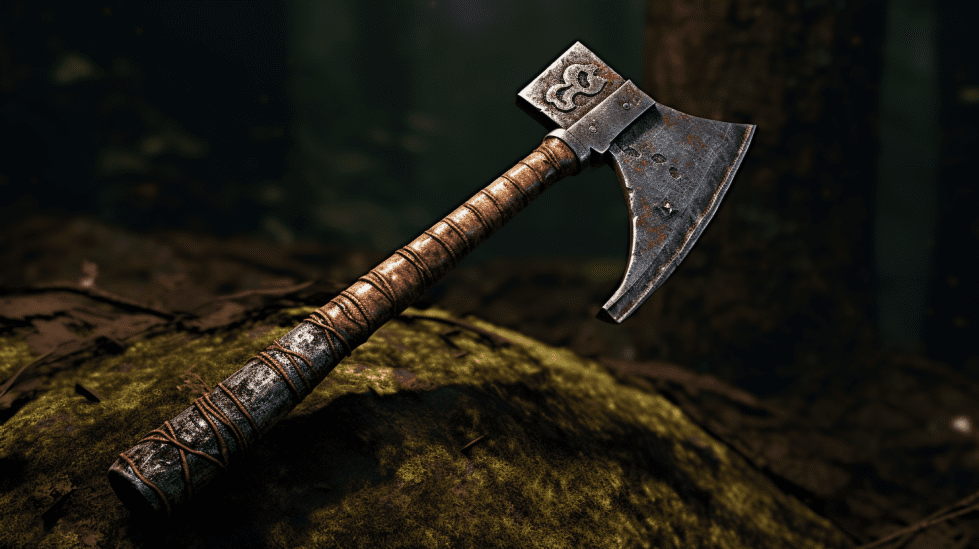
Another indispensable tool in my bushcraft kit is the bushcraft axe, which serves various purposes like chopping wood, clearing paths, and even processing game. A good bushcraft axe should have a durable head made from high-quality steel and a comfortable handle suitable for long periods of use. The axe size also plays a crucial role, depending on my intended usage and the weight I’m willing to carry.
Water Bottle
Hydration is vital during bushcraft excursions, making a reliable water bottle essential in my gear list like this 36 oz Yeti Rambler. My preferred water bottle should be lightweight, durable, easy to clean, and have a secure, leak-proof cap. I often choose a bottle made of materials like stainless steel or BPA-free plastics to ensure my drinking water remains safe and uncontaminated.
Personal Preference
Ultimately, the bushcraft essentials in my kit might vary based on my personal preferences and specific needs. As I venture into the outdoors, I learn more about my individual requirements and make adjustments to my gear accordingly. By refining my bushcraft essentials and skills, I can ensure a safe, enjoyable, and rewarding experience in the wilderness.
Footnotes
Survival Kit Essentials
Survival Gear List
As a bushcraft enthusiast myself, I always make sure to carry a well-rounded survival gear list with me when venturing into the wilderness. My experience has taught me the importance of having essential items such as a bushcraft knife, water bottle, sleeping bag, floor mat, headtorch, whistle, outdoor watch, and strong nylon cord. Additionally, a fire starter kit and a reliable multi-tool are invaluable in the outdoors, as they can come in handy when starting a fire or accomplishing various tasks.
First Aid Kit
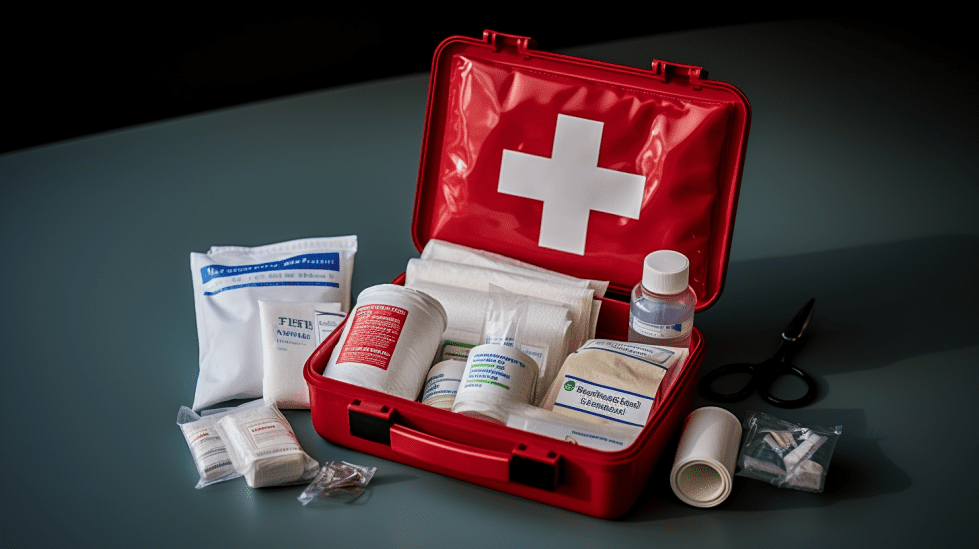
In my opinion, a comprehensive first aid kit is crucial for any bushcraft adventure. I make sure to include items like adhesive bandages, gauze pads, antiseptic wipes, tweezers, medical tape, pain relievers, and any necessary prescription medications. It’s also a good idea to have a small booklet on basic first aid procedures to reference in case of an emergency.
Survival Situation
If I ever found myself in a survival situation, my bushcraft skills and preparedness would be put to the test. One of the most important things to remember in such scenarios is to stay calm and think clearly. Having the right survival gear, including a knife or blade, would be essential in these situations. A knife can be used to make basic bushcraft tools, baton wood, prepare foraged food, and much more. Additionally, being proficient in starting a fire, building a shelter, and purifying water are skills that could make all the difference in a survival situation.
In conclusion, having a well-prepared survival kit with essentials such as a survival gear list, first aid kit, and the knowledge to handle a survival situation is vital for any bushcraft enthusiast like me. It’s always best to be confident, knowledgeable, and ready for whatever the wilderness has in store.
Clothing for the Great Outdoors
As an enthusiast of the great outdoors, I understand the importance of proper clothing when it comes to bushcraft and survival. In this section, we’ll discuss the essentials: base layers, wool socks, outer shell, and waterproof clothing.
Base Layers
For any outdoor adventure, I always start with well-chosen base layers. These are the garments directly touching my skin and have a critical role in regulating body temperature and moisture. I prefer using moisture-wicking materials like synthetic fabrics or merino wool to keep me dry and comfortable. Remember to avoid cotton, as it retains moisture and can lead to hypothermia in cold conditions.
Wool Socks
Never underestimate the importance of a good pair of wool socks. I always opt for wool because it provides excellent insulation even when wet, and it’s naturally odor-resistant. Additionally, investing in a few different thicknesses will help me adapt to varying weather conditions and activity levels.
Outer Shell
The outer shell is my first line of defense against harsh elements. A good quality outer shell will protect me from wind, rain, and snow while still being breathable. For an effective bushcraft gear setup, I often choose a durable, abrasion-resistant jacket and pants made from materials like Cordura or polyester.
Waterproof Clothing
Finally, it’s crucial to pack waterproof clothing for my bushcraft adventures. Waterproof jackets, over-trousers, and gaiters have saved me from discomfort and hypothermia on more than one occasion. I always look for clothing with a high waterproof rating, reinforced seams, and adjustable cuffs and hems.
By carefully selecting clothing for each of these categories, I can confidently venture into the great outdoors well-equipped for any weather conditions. Remember, the key is to choose high-quality, durable materials that offer protection and comfort in any situation.
Gearing Up for the Cold
Warm Layers
When I’m preparing for a cold-weather bushcraft adventure, one of the essential aspects of my gear list is warm layers. Insulated jackets or parkas, a base layer, and a good quality mid-layer are all crucial to staying warm and comfortable when the temperature drops. I’ve found that layering is the key to maintaining warmth, as it allows me to adjust and regulate my body temperature according to my activity level and the weather conditions.
Wool Blanket

In addition to warm layers, I never underestimate the importance of carrying a wool blanket on my bushcraft outings. Wool is known for its excellent insulation properties, wicking moisture away from the body while still providing warmth, even when wet. It’s also naturally fire-resistant, which makes it an ideal choice for use around a campfire. I’ve found that a good quality wool blanket can be used as an extra layer of insulation, a ground cover, or even improvised shelter during cold nights in the wilderness.
Cold Night
During cold nights, it’s essential for me to have proper shelter and adequate insulation to stay warm and comfortable. I’ve learned the importance of setting up camp in a well-protected area away from strong winds and moisture to minimize heat loss. A sleeping pad is also crucial, as it provides insulation from the cold ground and adds an extra layer of comfort. I always ensure that my sleeping system is well suited for the expected weather conditions, combining layers and blankets as needed to optimize warmth.
Cold Weather
Cold weather bushcraft adventures require a bit more planning and preparation, but with the proper gear and knowledge, I can brave the elements with confidence. I always take care to dress in layers, pack a wool blanket, and ensure my sleeping system is appropriate for the temperatures I expect to face. Staying dry, warm, and comfortable while enjoying the wild outdoors, even in cold weather conditions, is made possible by bringing the right gear and using the essential strategies I’ve outlined above.
Gear for Fire Starting
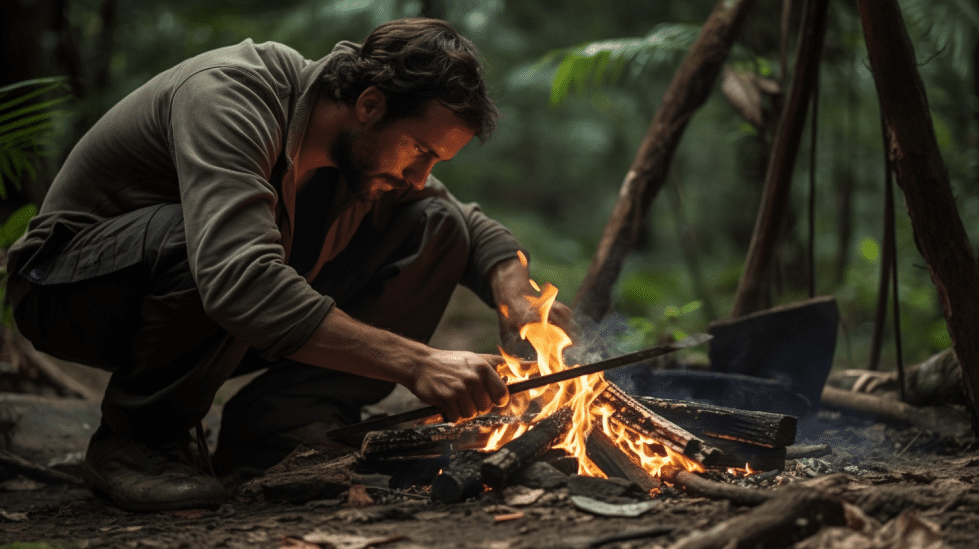
As a bushcraft enthusiast, I know the importance of having reliable fire-starting equipment in my gear list. In this section, I’ll discuss four essential tools for fire-starting: Ferro Rod, Fire Starter, Waterproof Matches, and Good Tinder.
Ferro Rod
In my experience, a Ferro Rod is one of the most reliable fire-starting tools. It generates a shower of hot sparks when struck with a sharp edge, making it very effective in catching tinder on fire. The main advantage of a Ferro Rod is its ability to work even in damp or wet conditions. I’ve personally used this Bushcraft Survival Ferro Rod which delivered great performance.
Fire Starter
Having a good Fire Starter simplifies the process of igniting a fire. There are various types of fire starters, including magnesium fire starters, fire piston, and solar fire starters. Personally, I have found this fire starter survival tool to be extremely useful and very effective in quickly lighting a fire.
Waterproof Matches
Waterproof Matches are another essential fire-starting tool that can come in handy during wet or humid conditions. These matches have a waterproof coating which ensures they remain functional even when exposed to moisture. I’ve used waterproof matches in the past during my bushcraft trips, and they’ve proven to be reliable in difficult situations.
Good Tinder
Quality Tinder is the key to getting your fire started quickly and efficiently. Some of the best tinder options are natural materials like dry leaves, grass, and small twigs. However, to ensure consistent and reliable performance, I always carry waterproof tinder with me like the one included in the Uncle Tommy’s Stuff Fire Starten Stuff Combo Kit. These can easily catch fire and make starting a fire less time-consuming.
These are the four essential tools that I believe every bushcraft gear list should include for fire starting. Equipping yourself with these items will not only make starting fires easier but also ensure your success in various weather conditions.
Survival Tools
Bushcraft Tools
In my experience, having the right bushcraft tools is essential for survival in the wilderness. A good knife, like the ESEE 4P-DT Desert Tan Fixed Blade Knife, is a must-have for various tasks such as carving, cutting, and food preparation. Axes and hatchets, such as the Gransfors Bruks Small Forest Axe, are valuable for chopping wood and building shelters. Folding saws like the Mossy Oak 3-in-1 Folding Saw or a Silky folding handsaw can make cutting branches and small trees more manageable. Additionally, always carry a reliable fire starter kit and a sufficient amount of paracord for various uses.
Emergency Situation
During an emergency, I have found that certain items become indispensable. Water filtration systems, such as the Katadyn Hiker Microfilter Water Filter, are crucial for accessing clean drinking water. A compass like the SUUNTO A-30 NH USGS Compass is essential for navigation, especially in unfamiliar terrain. Also, having a reliable first aid kit like the Adventure Medical Kits will help me manage injuries and prevent infections.
Makeshift Shelter
In situations where I need to build a makeshift shelter quickly, my bushcraft gear must include a few essential items. A durable tarp, such as the Sanctuary SilTarp, provides a waterproof barrier for both ground cover and overhead protection. A folding shovel like the RHINO USA Folding Survival Shovel can be handy for digging trenches or leveling the ground. Additionally, quality cordage – preferably 200 feet of paracord – will help secure the shelter, while the previously mentioned axe or hatchet will come in handy for cutting branches to support the tarp.
Food and Water
Water Sources
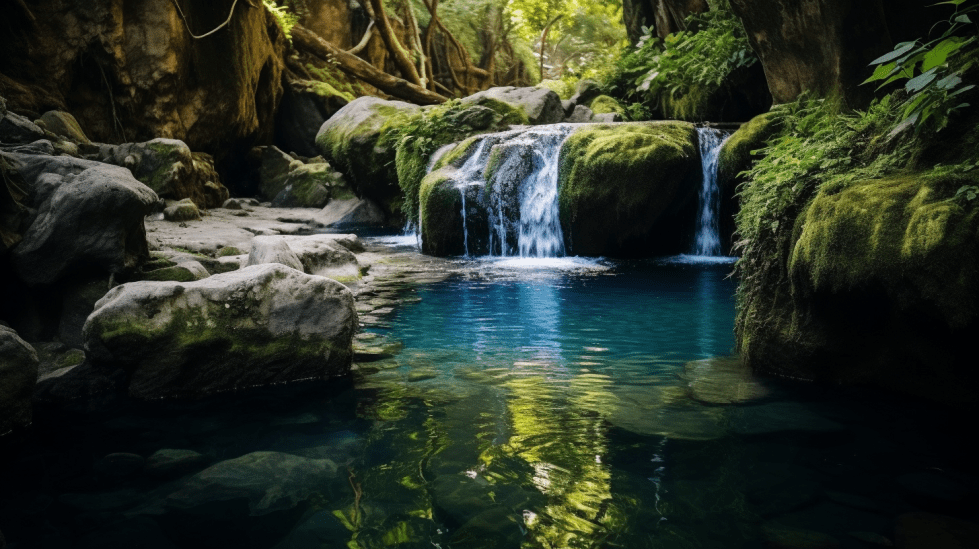
In my experience, finding reliable water sources is crucial for any bushcraft adventure. Natural water sources like rivers, streams, and lakes are often the best options. However, it’s essential to know that these sources may contain contaminants or harmful microorganisms. Consequently, it’s imperative to treat the water before consumption.
Water Purifier
To ensure I have safe drinking water while outdoors, I always carry a water purifier in my bushcraft gear. There are various types of water purifiers available, such as filtering devices, purification tablets, or UV light pens. I have found that a combination of a lightweight filter and purification tablets works well for me, as it’s both effective and easy to use. The filter removes larger particles and debris, while the tablets kill most waterborne pathogens, ensuring I have access to clean and safe water.
Food Preparation
Preparing food in the wilderness usually involves cooking over an open fire or using camping stoves. When assembling my bushcraft gear, I include a lightweight cooking set, which typically consists of a pot, a pan, and a compact stove. Additionally, carrying a reliable fire starter, like a ferrocerium rod, is crucial for building a cooking fire in case of emergencies or if a stove isn’t available.
Depending on my planned activities, I tend to pack non-perishable, easy-to-prepare meals like dehydrated or freeze-dried foods to reduce weight and save time during food preparation. I also carry essential utensils like a knife and a spork for convenience.
By prioritizing water and food needs in my bushcraft gear list, I can confidently venture into nature knowing that I am well-equipped to tackle my basic survival requirements.
Advanced Gear
Solar Panel
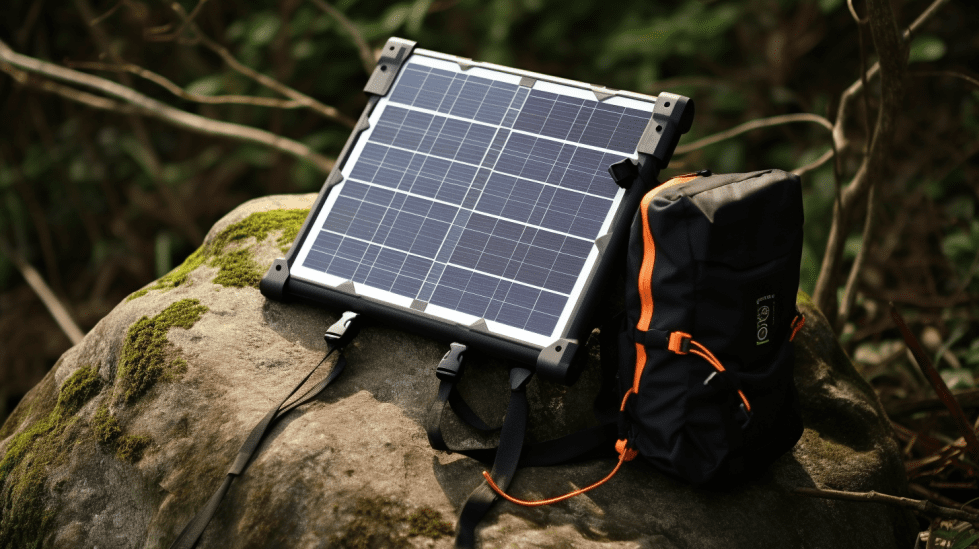
In my experience with bushcraft, incorporating a solar panel into my gear list has been extremely beneficial. A lightweight, foldable solar panel can be easily attached to my backpack, allowing me to harness the power of the sun while on the move. This renewable energy source helps charge essential devices such as GPS units, smartphones, and rechargeable flashlights. The key to choosing the right solar panel for bushcraft is to find one that is compact, water-resistant, and durable.
Rechargeable Batteries
When it comes to powering my gear, I prefer to use rechargeable batteries. Not only do they save me money in the long run, but they also reduce my environmental impact. I usually carry several sets of rechargeable batteries in various sizes, such as AA and AAA, to ensure that all my devices have a reliable power source. Additionally, it’s crucial to select high-capacity batteries for extended use in the wilderness. I have found that using a battery charger compatible with my solar panel keeps my devices powered and ready to use without the need for an external power source.
Extra Batteries
Even though I rely on solar panels and rechargeable batteries, I always ensure to pack extra batteries as a backup. In situations where sunlight is limited or the rechargeable batteries fail, having extra alkaline batteries in my pack can be a lifesaver. It’s important to remember that non-rechargeable batteries have a longer shelf life, making them suitable for emergencies and long-term storage in a bushcraft kit. I recommend keeping extra batteries in waterproof containers to protect them from moisture and damage.
By incorporating these advanced gear options into my bushcraft adventures, I have streamlined my packing process and ensured that I am always prepared for unexpected situations. Solar panels, rechargeable batteries, and extra batteries have proven to be invaluable additions to my outdoor excursions, providing me with a reliable and eco-friendly power source for essential devices.
Bushcraft Courses and Training
Survival Training
As a bushcraft enthusiast, I’ve found that survival training is an essential part of developing my skills in the great outdoors. Survival training courses teach basic and advanced techniques that can help me overcome challenges in various environments, whether it’s a dense forest, a desert, or a snowy landscape. Some of these courses focus on:
- Fire starting techniques, such as using a ferro rod.
- Water purification methods, like utilizing a Sawyer mini filter.
- Shelter building and insulation from natural resources.
- Foraging for edible plants and insects.
Survival School
I’ve come across several survival schools that provide comprehensive, hands-on training in bushcraft and wilderness survival. These schools often offer classes in-person, led by experienced guides and instructors. I benefit from their expertise and invaluable practical experience as I learned navigation, tracking, and trapping.
Some survival schools that caught my attention are Coalcracker Bushcraft and Gray Bearded Green Beret. These schools offer a variety of courses, all designed to build my knowledge and confidence in surviving and thriving outdoors.
Bushcraft Courses
In addition to pure survival training, I also explored bushcraft courses that help me develop a deeper understanding of the natural world. These courses focus on skills such as:
- Crafting tools and utensils from natural materials, like wood, stone, or bone.
- Cooking techniques using open fire or improvised ovens.
- Harnessing natural resources for medicine, food, and clothing.
Taking bushcraft courses has helped me build a strong foundation in outdoor self-reliance. I’ve been able to improve my skills and appreciate the beauty and resources that nature provides, from observing wildlife to utilizing versatile plants like birch trees. It’s a rewarding journey that consistently teaches me something new.
Frequently Asked Questions
What are the essential items for a bushcraft pack?
When it comes to packing for bushcraft, I always make sure to include some key items. A cutting tool, such as a knife, axe, or saw, is critical. I also pack a fire starter, shelter (tarp, tent, or hammock), cooking equipment, water purification system, navigation tools like a compass and map, cordage (paracord or rope), a first aid kit, appropriate clothing, and a reliable backpack for storage.
Which tools are critical for outdoor survival?
While many tools are beneficial for outdoor survival, I believe the most critical ones to have are a good quality bushcraft knife, a fire starter kit, and shelter materials like a durable tarp or tent. These items ensure you can cut, build, create fire, and set up shelter when necessary. Proper navigation tools and a first aid kit are also essential for safety and well-being.
What is the most effective gear for bushcraft in 2023?
The most effective gear for bushcraft in 2023 would include lightweight, durable, and versatile items that can withstand various weather conditions. Look for a high-quality bushcraft knife, a compact and functional fire starter, and a waterproof shelter (tarp, tent, or hammock) that can be quickly set up. Additionally, opt for cooking equipment, clothing, and backpacks made from sturdy materials to ensure their longevity.
How to create a thorough bushcraft checklist?
To create a thorough bushcraft checklist, I start by researching the specific environment and weather conditions where I’ll be going. This helps me identify the essential gear I’ll need for the climate and terrain. Then, I list out all the necessary items in categories: cutting tools, fire starting, shelter, cooking, water, navigation, cordage, first aid, clothing, and storage. I go through the list carefully and ensure my equipment is functional, lightweight, and versatile for various situations.
What should you consider when packing for bushcraft camping?
When packing for bushcraft camping, I consider the location, climate, and potential challenges I might encounter. This helps me choose the right gear for the environment and prioritize which items to carry. I aim to keep my pack lightweight without compromising on essentials like cutting tools, shelter, fire starting, water purification, and first aid. Additionally, I make sure that my clothing and footwear choices are appropriate for the weather and terrain.
How does a wilderness survival kit differ from a bushcraft gear list?
While there are some overlaps between a wilderness survival kit and a bushcraft gear list, the main difference lies in their focus and purpose. A wilderness survival kit focuses on short-term emergency situations and usually includes items like emergency blankets, whistles, signallings devices, and lightweight high-energy food bars. In contrast, a bushcraft gear list emphasizes long-term self-reliance in the wilderness, which typically includes versatile tools, shelter materials, fire starting, and equipment for food preparation and water procurement. Personally, I adapt my gear list depending on whether I’m focusing on short-term survival or long-term bushcraft adventures.


